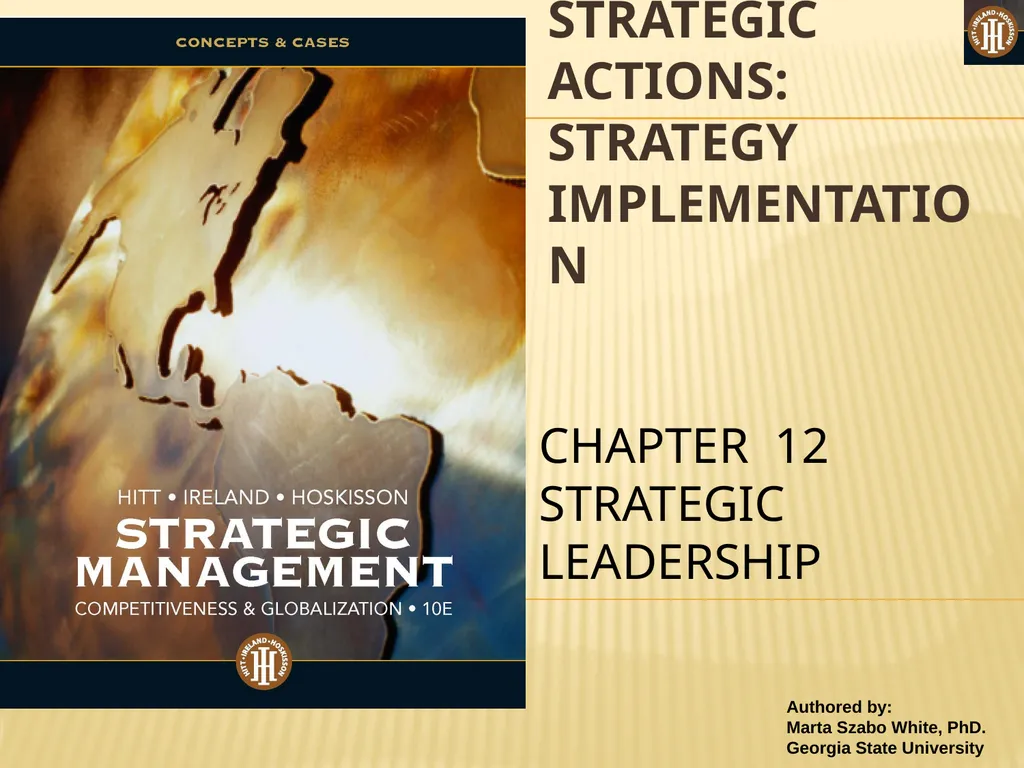PART 3: STRATEGIC ACTIONS: STRATEGY IMPLEMENTATION
Author : briana-ranney | Published Date : 2025-06-27
Description: PART 3 STRATEGIC ACTIONS STRATEGY IMPLEMENTATION CHAPTER 12 STRATEGIC LEADERSHIP THE STRATEGIC MANAGEMENT PROCESS KNOWLEDGE OBJECTIVES KNOWLEDGE OBJECTIVES SUCCESSION AT HP CAN THE NEW CEO SAVE THE COMPANYS SOUL HPs culture of
Presentation Embed Code
Download Presentation
Download
Presentation The PPT/PDF document
"PART 3: STRATEGIC ACTIONS: STRATEGY IMPLEMENTATION" is the property of its rightful owner.
Permission is granted to download and print the materials on this website for personal, non-commercial use only,
and to display it on your personal computer provided you do not modify the materials and that you retain all
copyright notices contained in the materials. By downloading content from our website, you accept the terms of
this agreement.
Transcript:PART 3: STRATEGIC ACTIONS: STRATEGY IMPLEMENTATION:
PART 3: STRATEGIC ACTIONS: STRATEGY IMPLEMENTATION CHAPTER 12 STRATEGIC LEADERSHIP THE STRATEGIC MANAGEMENT PROCESS KNOWLEDGE OBJECTIVES KNOWLEDGE OBJECTIVES SUCCESSION AT HP: CAN THE NEW CEO SAVE THE COMPANY’S SOUL? ■ HP’s culture of innovation suffered under Mark Hurd, the former CEO’s leadership. ■ Hurd was efficiency oriented and had made the company money by tightly controlling costs. ■ Former SAP CEO Leo Apotheker was named as CEO successor and had the opportunity to “reboot” the company and its culture. OPENING CASE SUCCESSION AT HP: CAN THE NEW CEO SAVE THE COMPANY’S SOUL? ■ Having lost its culture of innovation, HP’s strategic redirection into software and cloud computing needed to be successful. ■ With a merciless market, the expectation of strong performance exists even though major strategic changes take time to produce fruitful results. ■ Apotheker’s strategic leadership is being tested in the midst of layoff rumors and profit target reductions. OPENING CASE INTRODUCTION ● Effective strategic leadership is the foundation for successfully using the strategic management process. ● Strategic leaders guide the firm in ways that result in forming a vision and mission. ● This guidance often finds leaders thinking of ways to create goals that stretch everyone in the organization to improve performance. ● Moreover, strategic leaders facilitate the development of appropriate strategic actions and determine how to implement them. ● Leaders can make a major difference in how a firm performs. STRATEGIC LEADERSHIP AND STYLE Strategic leadership: the ability to anticipate, envision, maintain flexibility, and empower others to create strategic change as necessary Multifunctional task Managing through others Managing an entire enterprise rather than a functional subunit Coping with change that is increasing in the global economy Most critical skill: attracting and managing human (includes intellectual) capital NOTE: Many examples of well-known CEOs are mentioned throughout the chapter to illustrate their leadership styles. STRATEGIC LEADERSHIP AND STYLE FIGURE 12.1 Strategic Leadership and the Strategic Management Process STRATEGIC LEADERSHIP AND STYLE EFFECTIVE STRATEGIC LEADERS Build strong ties with external stakeholders to gain access to information and advice Understand how their decisions impact their firm Sustain above-average performance Attract and manage human capital Do not delegate decision-making responsibilities Inspire and enable others to do excellent work and realize their potential Promote and nurture innovation through transformational leadership THE ROLE OF TOP-LEVEL MANAGERS ● Managers use their discretion when making strategic decisions ● Primary factors that determine the amount of a














